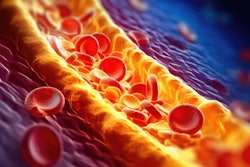Monday, November 26 | 3:50 p.m.-4:00 p.m. | SSE03-06 | Room N229
Individuals who participated in endurance training had significantly fewer plaques on coronary CT angiography (CCTA) scans and a lower risk of coronary artery disease than individuals who did not regularly exercise, according to a study by researchers from Austria.Researchers from Innsbruck Medical University examined the imaging data of 45 endurance athletes and 45 relatively inactive individuals who underwent CCTA exams. Consistent endurance training consisted of at least one hour of aerobic exercise three times per week.
They used a variety of metrics to determine the individuals' risk of coronary artery disease (CAD), including the stenosis severity, total plaque burden, noncalcified plaque burden (or G-score), and fractional flow reserve (FFR) of the coronary arteries.
After analyzing the data, lead investigator Dr. Gudrun Feuchtner and colleagues found that the severity of stenosis, total plaque burden, and noncalcified plaque burden in the exercise group were lower than in the control group by a statistically significant degree. Furthermore, both of the metrics for plaque burden had a statistically significant correlation with FFR-CT measurements.
The average coronary calcium score of the exercise group also was lower than that of the control group, but the difference was not statistically significant.
Thus, regular endurance training may help reduce the burden and risk of CAD, with a particularly strong effect on high-risk plaques, Feuchtner and colleagues noted. The added advantage of using total and noncalcified plaque burden to predict this risk is that they are easy to implement into structured clinical reporting.




















